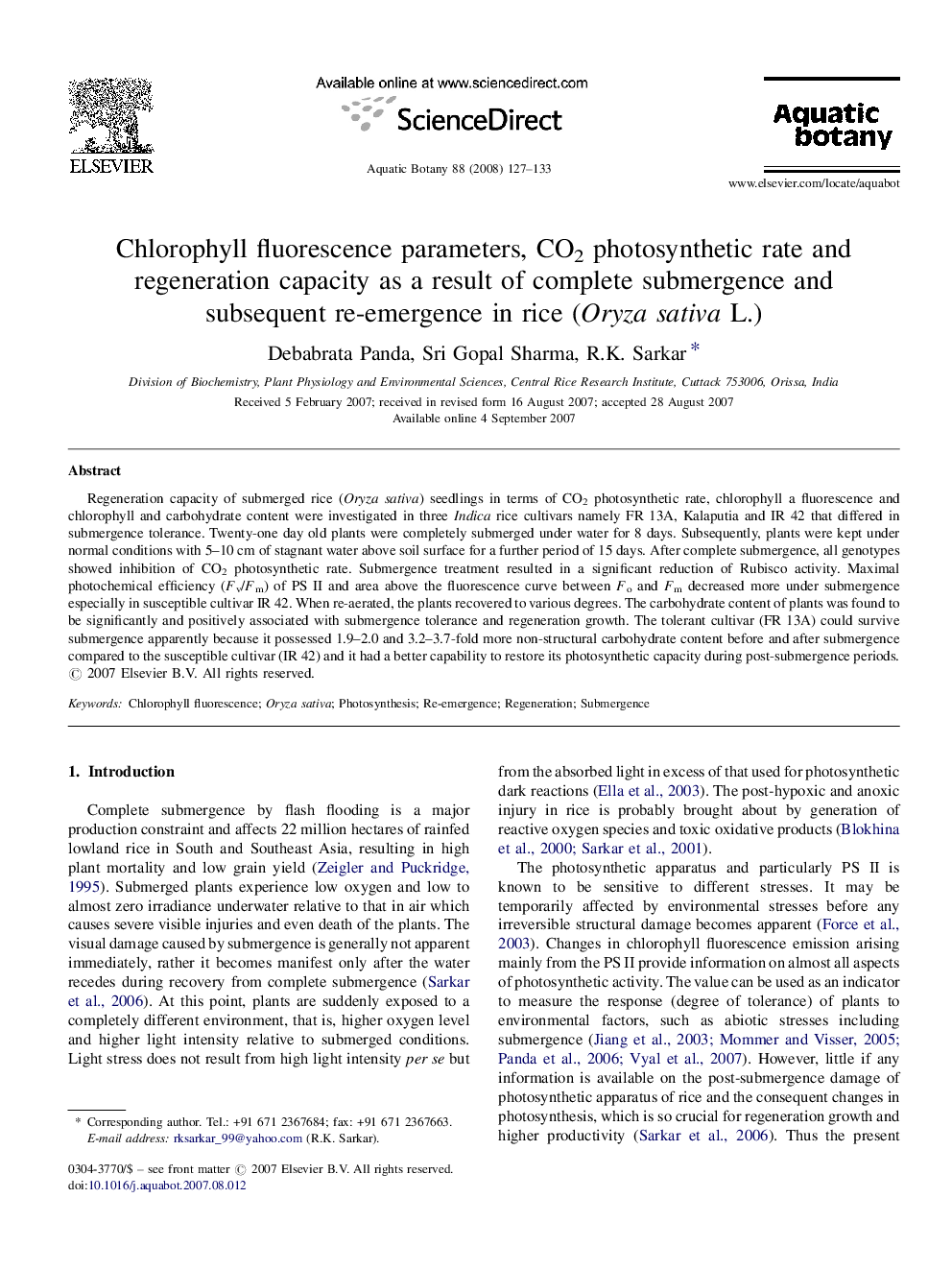| Article ID | Journal | Published Year | Pages | File Type |
|---|---|---|---|---|
| 4528668 | Aquatic Botany | 2008 | 7 Pages |
Regeneration capacity of submerged rice (Oryza sativa) seedlings in terms of CO2 photosynthetic rate, chlorophyll a fluorescence and chlorophyll and carbohydrate content were investigated in three Indica rice cultivars namely FR 13A, Kalaputia and IR 42 that differed in submergence tolerance. Twenty-one day old plants were completely submerged under water for 8 days. Subsequently, plants were kept under normal conditions with 5–10 cm of stagnant water above soil surface for a further period of 15 days. After complete submergence, all genotypes showed inhibition of CO2 photosynthetic rate. Submergence treatment resulted in a significant reduction of Rubisco activity. Maximal photochemical efficiency (Fv/Fm) of PS II and area above the fluorescence curve between Fo and Fm decreased more under submergence especially in susceptible cultivar IR 42. When re-aerated, the plants recovered to various degrees. The carbohydrate content of plants was found to be significantly and positively associated with submergence tolerance and regeneration growth. The tolerant cultivar (FR 13A) could survive submergence apparently because it possessed 1.9–2.0 and 3.2–3.7-fold more non-structural carbohydrate content before and after submergence compared to the susceptible cultivar (IR 42) and it had a better capability to restore its photosynthetic capacity during post-submergence periods.
